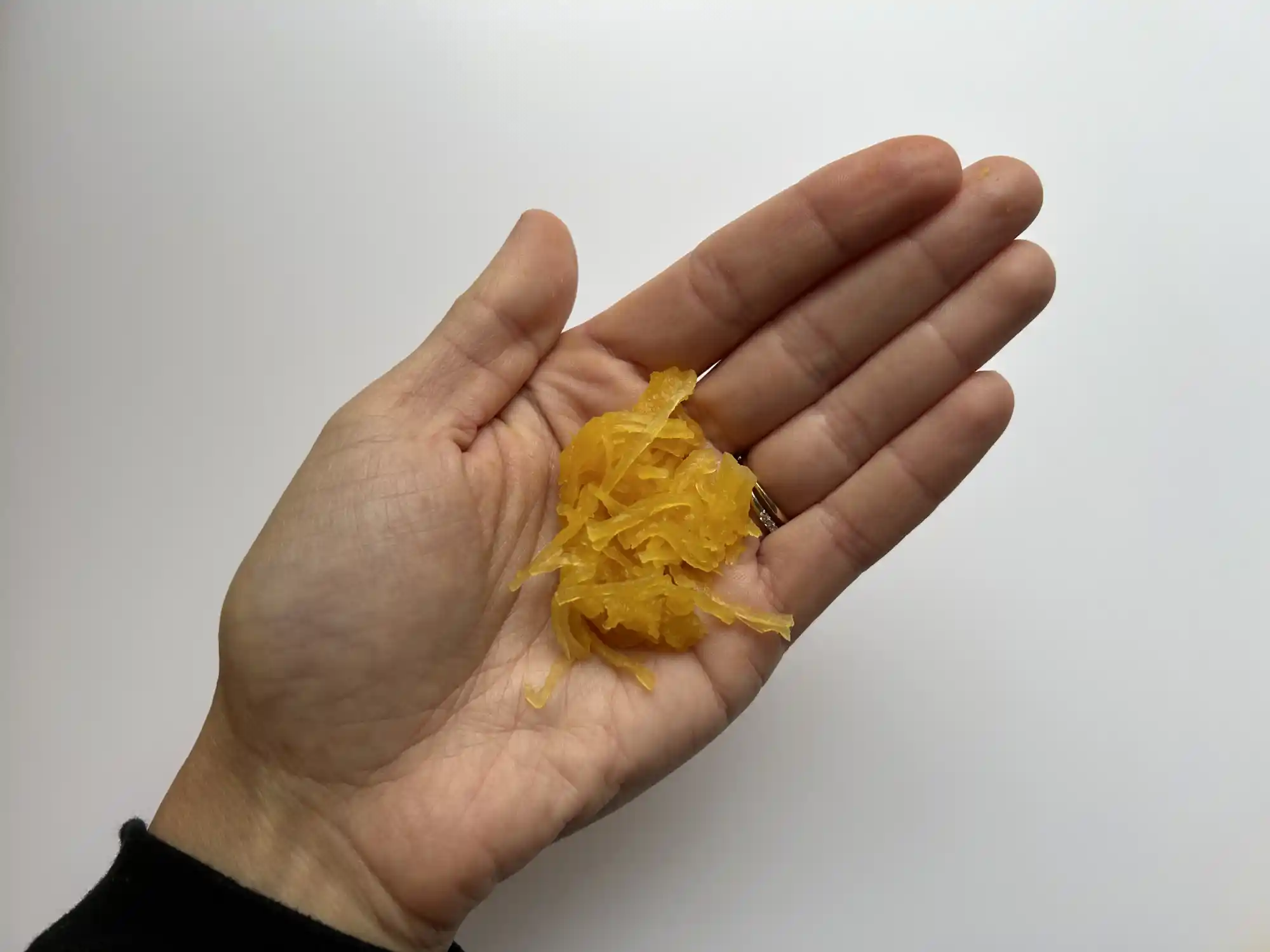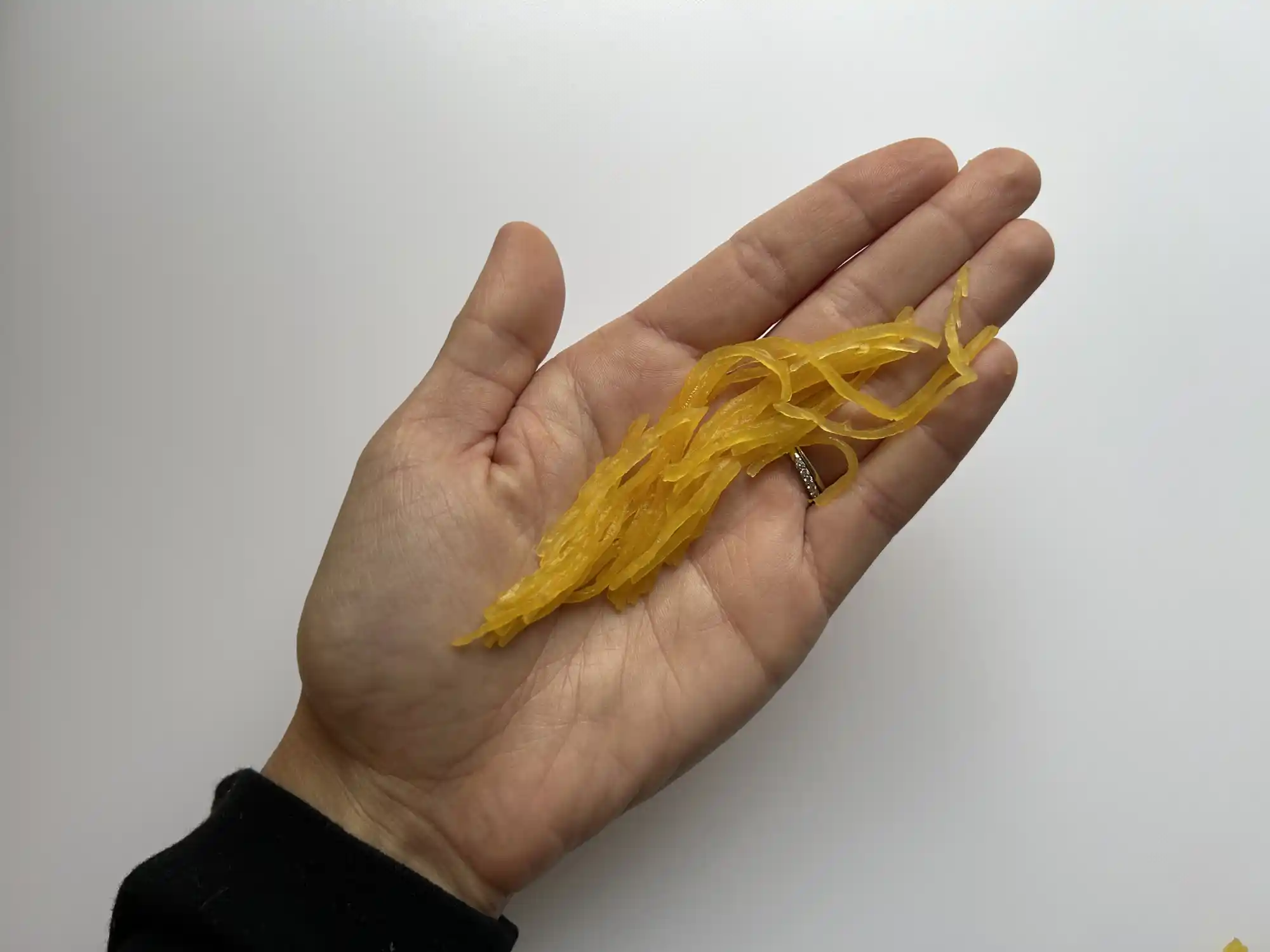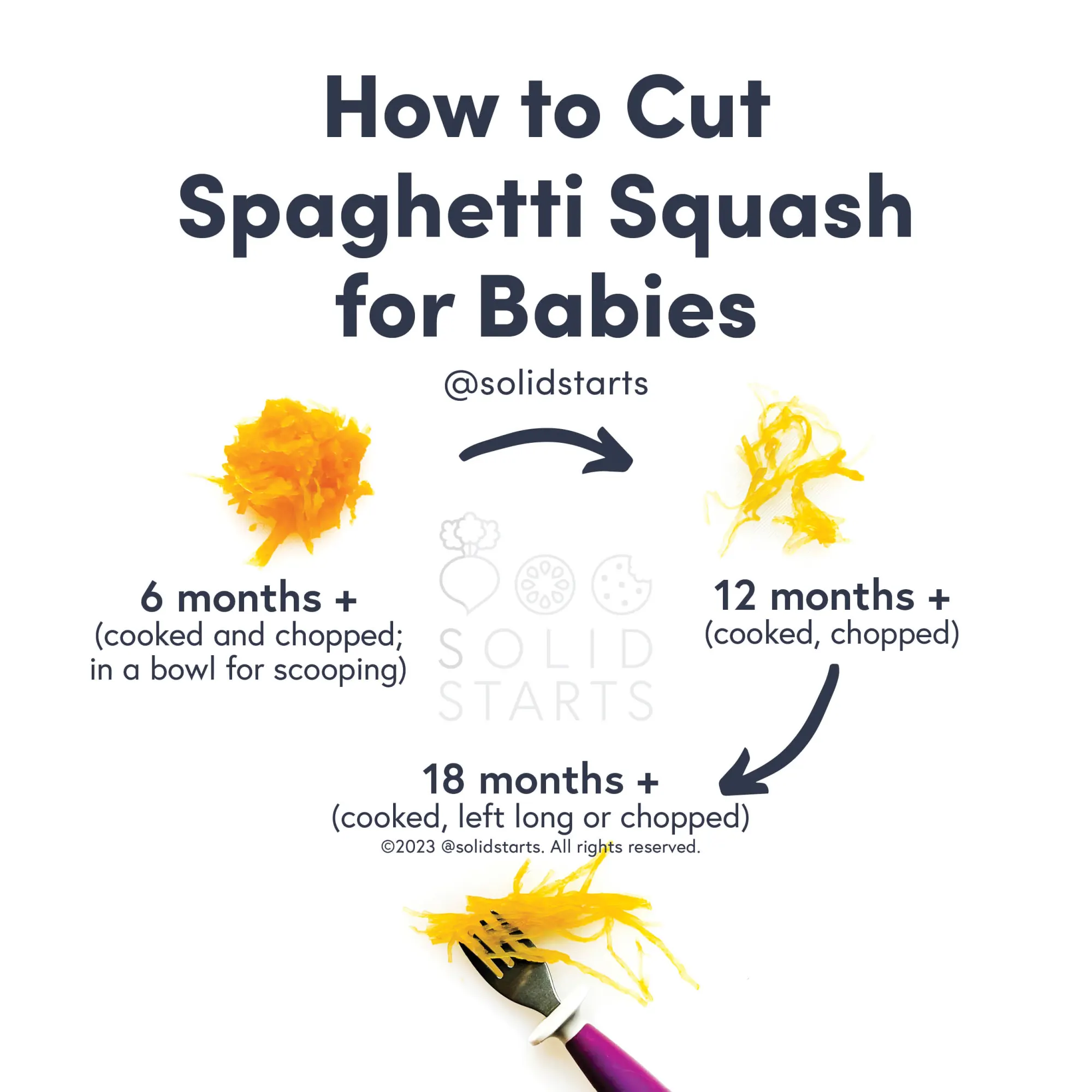Acceda a la base de datos First Foods® en Solid Starts App.
Leer másCalabaza espagueti
Vegetal
Sugerencia de edades
6 meses
Alto contenido de hierro
No
Alérgeno común
No

When can babies have spaghetti squash?
¡Lo sentimos, esta página aún no está disponible en español! Estamos trabajando tan rápido como podemos para traducir todo nuestro contenido, gracias por tu paciencia y apoyo.
Spaghetti squash may be introduced as soon as baby is ready for solids, which is generally around 6 months of age.
Squashes are an ancient agricultural crop, with some estimates tracing spaghetti squash’s ancestors to 10,000 years ago in Mexico, the native terrain of spaghetti squash. Today, spaghetti squash is grown around the world and goes by different names: golden macaroni, noodle squash, spaghetti marrow, and vegetable spaghetti. As the names suggest, the flesh inside a spaghetti squash can be pulled apart to look like pasta after it is cooked.
How do you serve spaghetti squash to babies?
Cada bebé se desarrolla a su propio ritmo, y las sugerencias que ofrecemos sobre cómo cortar o preparar determinados alimentos son generalizaciones para una amplia audiencia.
6 months old +:
Serve chopped, cooked squash strands in a bowl for baby to scoop, adding a bit of olive oil or your favorite sauce as desired. Know that strands of spaghetti squash can spread on the tongue and stick in the mouth, which can cause babies to gag—a perfectly normal reflex. If baby is struggling with the texture, try mixing finely chopped cooked spaghetti squash into soft, scoopable foods such as mashed sweet potatoes, or yogurt, then pre-load a baby spoon and offer it in the air to encourage self-feeding. Alternatively, stir cooked, chopped spaghetti squash into eggs or batter to make large, soft patties or fritters that baby can munch on.
9 months old +:
Offer small clumps or long strands of soft, cooked spaghetti squash for baby to pick up with their developing pincer grasp, or continue to mix strands of cooked spaghetti squash into scoopable foods or finger foods like patties or fritters.
12 months old +:
Loosely chop the spaghetti squash strands to offer on their own for the toddler to practice picking up. If you’d like to encourage utensil use, you can pre-load an age-appropriate fork or offer the utensil for the child to try using by themselves. If you’d like, you can even offer a half of a cooked spaghetti squash with the seeds removed as a “boat” and show the child how to scoop out the strands by themselves with their fingers or a utensil. Serving this way isn’t to encourage consumption of more food, but rather to engage the toddler’s senses of curiosity and fun by serving an extra-large piece of food in a novel shape.


¡Lo sentimos, esta página aún no está disponible en español! Estamos trabajando tan rápido como podemos para traducir todo nuestro contenido, gracias por tu paciencia y apoyo.
Videos
Is spaghetti squash a choking hazard for babies?
Yes. Raw or undercooked spaghetti squash is very firm and challenging to chew, which are qualities that pose an increased risk of choking. To reduce the risk, prepare and serve spaghetti squash in an age-appropriate way as described in the How to Serve section. As always, make sure you create a safe eating environment and stay within an arm’s reach of baby during meals.
Learn the signs of choking and gagging and more about choking first aid in our free guides, Infant Rescue and Toddler Rescue.
Is spaghetti squash a common allergen?
No. Allergies to ingestion of winter squashes, such as spaghetti squash, are uncommon, but have been reported. There have also been reports of people getting an itchy rash on their hands after handling winter squashes. To minimize any reaction, wash your hands immediately after preparing the squash. If baby’s skin is very sensitive, apply a barrier ointment (such as pure white petroleum jelly or a plant-based oil-wax combination) to baby’s face and diaper area before eating, and gently wash face and hands after eating.
People who are allergic to ragweed pollen and/or other fruits and vegetables in the Cucurbitaceae family may also be sensitive to winter squashes, such as spaghetti squash, or experience Oral Allergy Syndrome (also known as pollen-food allergy syndrome). Oral Allergy Syndrome typically results in short-lived itching, tingling, or burning in the mouth and is unlikely to result in a dangerous reaction. Cooking, canning, and/or peeling squashes (as applicable) may help minimize and even eliminate the reaction.
As with introducing any new food, start by serving a small quantity for the first few servings. If there is no reaction, increase the amount over future meals.
Is spaghetti squash healthy for babies?
Yes. Spaghetti squash offers fiber and water, in addition to micronutrients like magnesium, and vitamins A, B6, C, and K. Spaghetti squash also provides plant compounds called carotenoids, which our bodies convert to vitamin A. These compounds support visual health and offer antioxidant and anti-cancer properties.
¿Cómo puedo calmar mis nervios al comenzar la alimentación complementaria?
Empápate del tema y practica las maniobras de rescate. Los padres y cuidadores que ven los videos de ahogamiento y rescate infantil en nuestro Pase completo de primeros alimentos a menudo comparten que se sienten mucho más seguros.
¿Cuánta comida debo servirle al/a bebé?
Al comienzo, ofrece una pequeña cantidad y confía en que tu bebé sabe cómo mostrar interés si quiere más haciendo ruidos, gestos, o gritando o extendiendo la mano. Ten en cuenta que la mayoría de los bebés entre 6 y 9 meses de edad no consumen muchos alimentos sólidos al principio. Para los bebés de entre 10 y 12 meses de edad, enfócate en ofrecer el equivalente a una comida equilibrada para adultos, pero con porciones más pequeñas. Pon atención a las señales que te da el/la niño/a: cuando el/la bebé te muestre que desea “más”, ofrécele más comida. Cuando el/la bebé muestre señales de “ya terminé”, para de ofrecerle comida.
Nuestro equipo
Escrito por
Consejos de expertos directo a tu bandeja de entrada
¡Suscríbete y recibe correos semanales con recetas, consejos y más!
Copyright © 2026 • Solid Starts Inc







